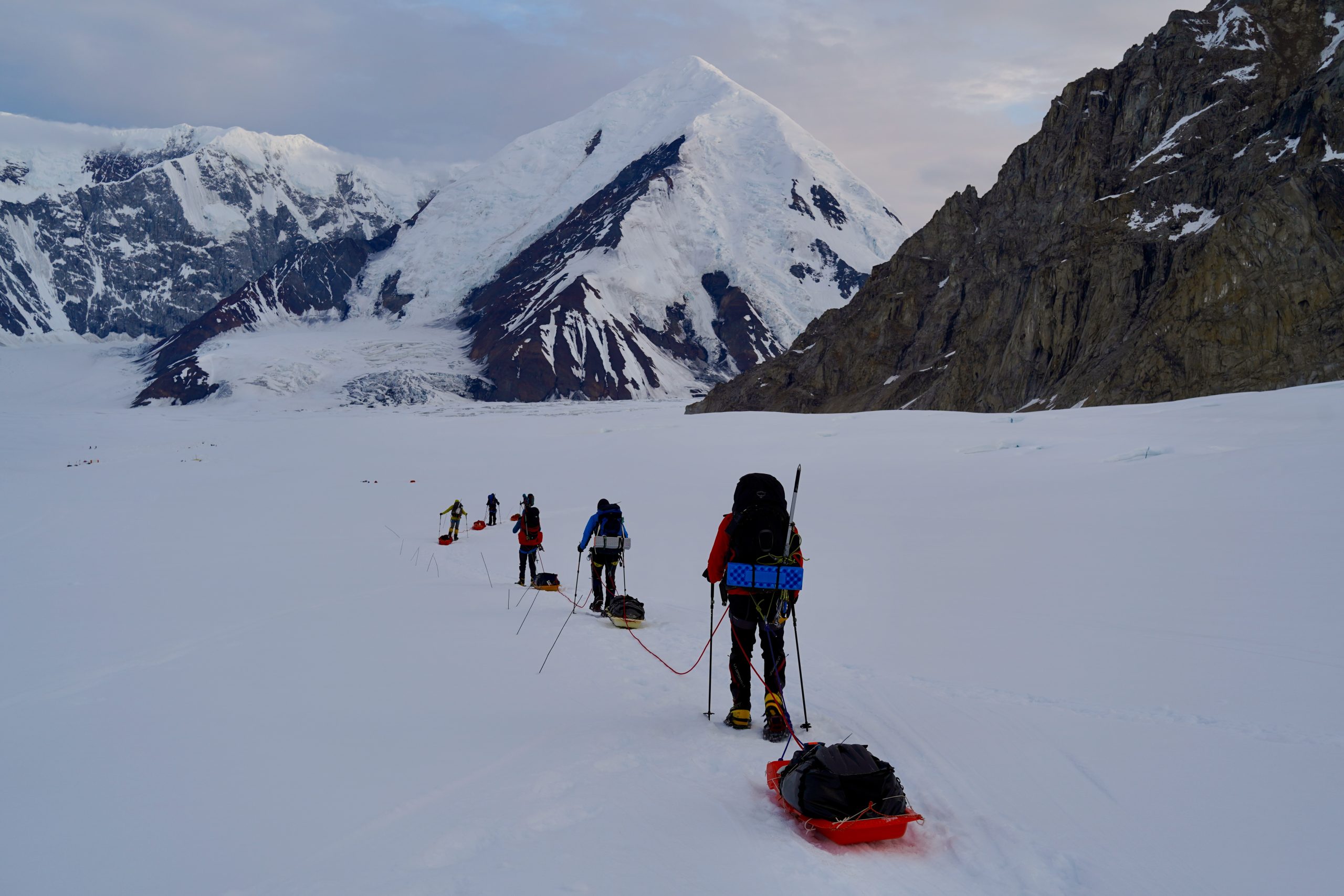Kathryn called in last night to let us know that the May 22 Denali team has safely arrived at Camp 1 at 7,200′ (2194m). The team is on a “night schedule”, moving in the early morning hours while it is still cold and the glacier is frozen. However, moving at 2am does not mean moving in the complete dark! As the sun hardly sets in Alaska this time of year. Base Camp is located on the Southeast Fork of the Kahiltna Glacier, which is a tributary of the main, 40-mile long Kahiltna Glacier. If you think of a glacier as essentially a frozen river, the SE Fork is a creek, flowing downhill into the main flow.
The move from Base Camp to Camp 1 is often considered one of the harder days on the mountain because the team is carrying all 110 pounds that they flew onto the glacier with. Some of that weight is in their backpack, and some is in a sled they each tow behind them. Today the team will start to do what we call “caching”—more on that later! The move from Base Camp to Camp 1 is 5.5 miles and 1,000 feet of elevation gain. First, the team started their day by descending 600 feet down Heartbreak Hill (named for when climbers have to ascend it as the last hill at the end of their expedition) from the southeast fork of the Kahiltna onto the main body of the 40-mile long glacier. Then they worked their way up to Camp 1, just below what we call Ski Hill, which rises about 1,800 feet above Camp 1.
Camp is on a compact section of glacier at the bottom of this hill. The ice at the bottom of the drop is compacted and is less prone to having crevasses than other sections of the Kahiltna. Crevasses are fractures in the surface of the glacier that form when the elasticity of the ice is overcome and it cracks. We like to think of it like a Snickers bar. If you take two ends of a Snickers bar and bend them towards each other with the middle facing towards the sky, it’s kind of like what happens on a glacier as it bends over changes in terrain. But if you bring the ends of that Snickers back parallel, you will see the cracks close up again. In Alaska, the crevasses can be much bigger than in many other glaciated parts of the world. Our climbers are traveling along the glacier roped together so as to provide security in the event that someone pokes into a crevasse.
A photo of a 2021 team leaving basecamp in the early hours
Kathryn here!



Hell Yeah, Kathryn and Team!!!
way to go Kathryn and Team!
So thrilling to hear you from the mountain, Kathryn!!! Could easily imagine PKB at your side during that call-in. I know you’re having one of the times of your life.
Good Luck !!